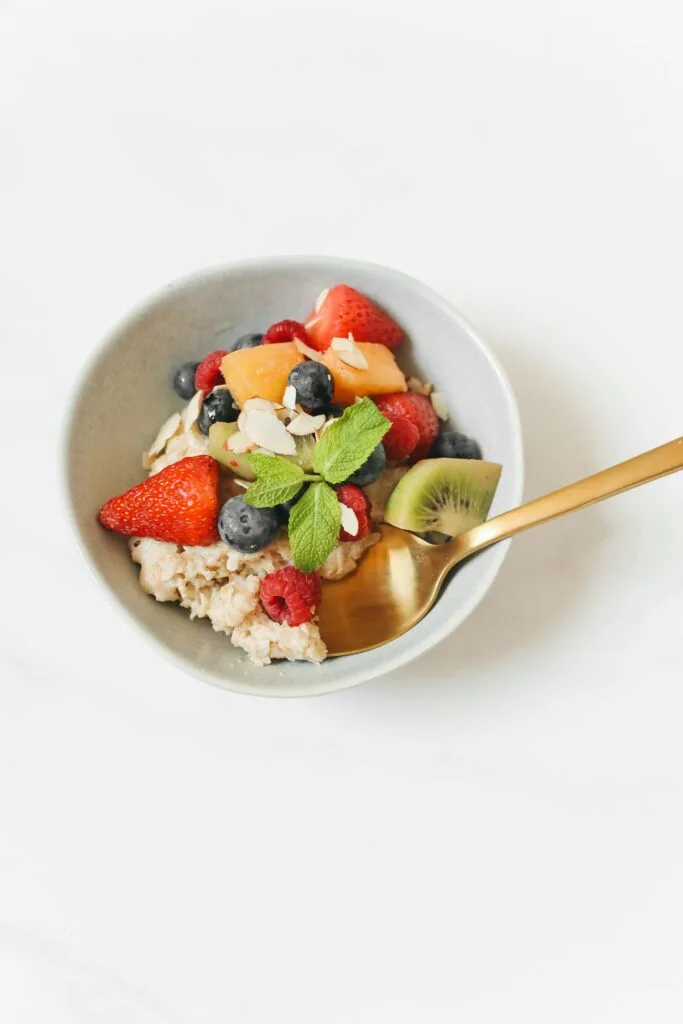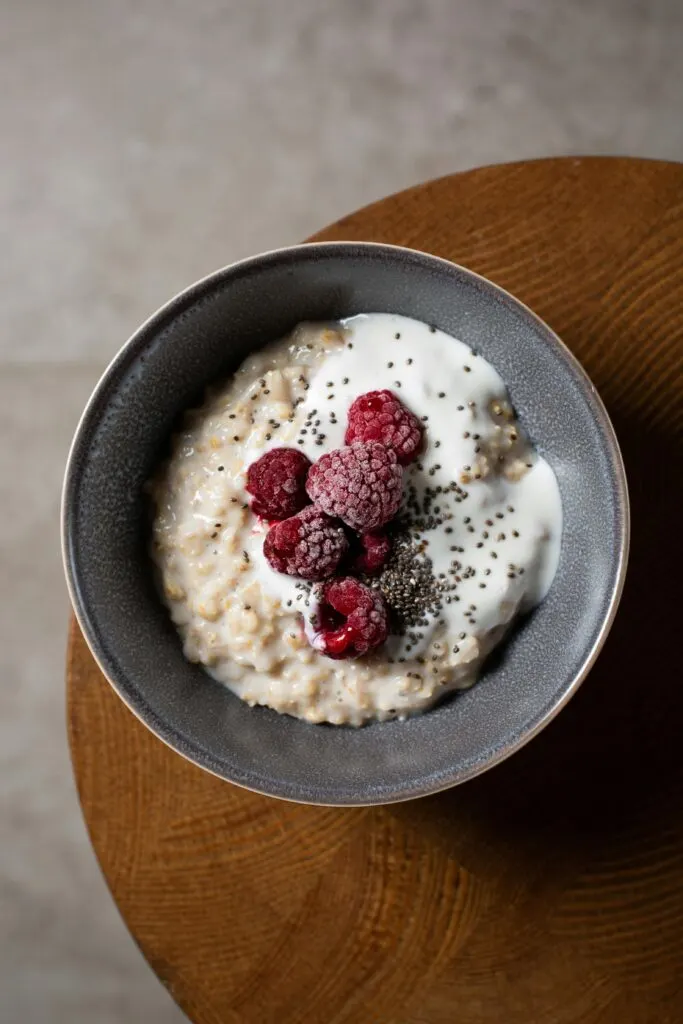As the sun peeks over the horizon, millions of breakfast enthusiasts face a crucial decision: Cream of Wheat vs oatmeal? These beloved hot cereals have graced morning tables for generations, each boasting a loyal following.
But when it comes to nutrition, taste, and versatility, which one is better? Let’s dive into this breakfast battle and explore the merits of these two iconic morning staples. Check out Oatmeal vs Porridge as well!

Historical Background and Origins
Both Cream of Wheat and Oatmeal have deep roots in American breakfast culture. Cream of Wheat, invented in 1893 by wheat millers in North Dakota, quickly became a household name. Its smooth texture and warm comfort made it an instant hit during the early 20th century.
Oatmeal, on the other hand, has a much longer history. Oats have been cultivated for thousands of years, with evidence of their consumption dating back to Bronze Age Europe. In America, oatmeal gained popularity in the 18th and 19th centuries, becoming a staple of pioneer diets due to its durability and nutritional value.
Nutritional Value Comparison
Calorie Content
When it comes to calorie content, both cereals are relatively similar:
- A serving of plain Cream of Wheat (about 1 cup cooked) contains approximately 120-130 calories.
- A serving of plain oatmeal (about 1 cup cooked) contains about 150-160 calories.
The slight difference makes oatmeal a bit more calorie-dense, which can be beneficial for those looking to maintain or gain weight.
Protein Content
Protein is essential for muscle building and repair. Here’s how these cereals stack up:
- Cream of Wheat provides about 3-4 grams of protein per serving.
- Oatmeal offers a more impressive 6-7 grams of protein per serving.
This higher protein content gives oatmeal an edge for those looking to increase their protein intake.
Fiber Content
Fiber is crucial for digestive health and maintaining a feeling of fullness:
- Cream of Wheat contains about 1-2 grams of fiber per serving.
- Oatmeal shines with 4-5 grams of fiber per serving, including beneficial beta-glucans.
The higher fiber content in oatmeal contributes to its reputation as a heart-healthy food.
Mineral Comparison
Both cereals offer various minerals, but in different amounts:
- Cream of Wheat is often fortified with iron, providing up to 50% of the daily value per serving.
- Oatmeal naturally contains more minerals overall, including magnesium, zinc, and phosphorus.
While Cream of Wheat may have an advantage in iron content, oatmeal provides a broader spectrum of minerals.
Vitamin Content
B vitamins, folate, and vitamin A are important for energy metabolism and overall health:
- Cream of Wheat is typically fortified with B vitamins and folic acid.
- Oatmeal contains natural B vitamins, including thiamin, riboflavin, and niacin.
Both cereals can contribute to your daily vitamin intake, with Cream of Wheat often having higher levels due to fortification.

Health Considerations
Gluten Sensitivity and Intolerance
For those with gluten-related issues:
- Cream of Wheat contains gluten and is not suitable for those with celiac disease or gluten sensitivity.
- Oatmeal is naturally gluten-free, but cross-contamination can occur during processing. Look for certified gluten-free oats if you have celiac disease.
Weight Loss and Dieting
Both cereals can be part of a weight loss plan, but oatmeal may have an edge:
- Oatmeal’s higher fiber content can help you feel fuller for longer.
- The protein in oatmeal can support muscle maintenance during weight loss.
Low-Carb Diets and Net Carbs
For those following low-carb diets:
- Cream of Wheat has about 24 grams of carbohydrates per serving, with minimal fiber.
- Oatmeal contains about 27 grams of carbs, but its higher fiber content results in fewer net carbs.
Glycemic Index and Glycemic Load
The impact on blood sugar is an important consideration:
- Cream of Wheat has a higher glycemic index, potentially causing more rapid spikes in blood sugar.
- Oatmeal, especially steel-cut oats, has a lower glycemic index and load, leading to more stable blood sugar levels.
Preparation and Versatility
Texture and Consistency Differences
- Cream of Wheat has a smooth, creamy texture that’s often described as comforting.
- Oatmeal offers a heartier, chewier texture, with variations depending on the type of oats used (instant, rolled, or steel-cut).
Preparation Methods and Recipes
Both cereals are versatile and can be prepared in various ways:
- Cream of Wheat can be cooked on the stovetop or in the microwave, and flavored with fruits, nuts, or sweeteners.
- Oatmeal can be prepared hot or cold (overnight oats), and customized with endless toppings and mix-ins.
Oatmeal’s versatility in recipes, from baked goods to savory dishes, gives it a slight advantage in this category.

Additional Considerations
Brand Name vs. Generic Terms
It’s important to note:
- “Cream of Wheat” is a registered trademark, while “oatmeal” is a generic term for cereal made from oats.
- Generic versions of Cream of Wheat are often called “farina” or “wheat cereal.”
Fortification and Enrichment
- Cream of Wheat is typically fortified with additional vitamins and minerals.
- Oatmeal is often sold in its natural state but can also be found in fortified varieties.
Sodium Intake and Blood Pressure
For those monitoring sodium intake:
- Plain Cream of Wheat contains minimal sodium.
- Plain oatmeal is naturally very low in sodium.
Always check labels on flavored varieties, as they may contain added salt.
You May Also Like
- What are Porridge Oats?
- Porridge Oats vs Rolled Oats
- Savory Oatmeal
- Instant Pot Oatmeal
- Apple Cinnamon Oatmeal
If you enjoy this cream of wheat vs oatmeal post, please leave a rating and review!

Conclusion
In the nutritional showdown between Cream of Wheat vs oatmeal, both cereals have their merits. Oatmeal emerges as a strong contender with its higher fiber and protein content, lower glycemic index, and versatility in recipes. It’s an excellent choice for those looking to manage weight, blood sugar levels, or increase their intake of whole grains.
Cream of Wheat, while lower in fiber, can be a good source of iron and B vitamins, especially for those who may have difficulty consuming enough of these nutrients. Its smooth texture may also be preferable for some, particularly young children or those with digestive sensitivities.
Ultimately, the choice between Cream of Wheat vs oatmeal comes down to personal preference, dietary needs, and health goals. Both can be part of a nutritious breakfast when prepared with minimal added sugars and paired with fruits, nuts, or seeds for additional nutrients. Whichever you choose, you’re setting yourself up for a wholesome start to your day.
